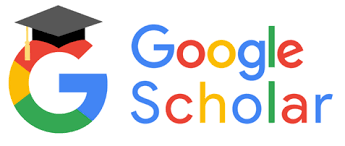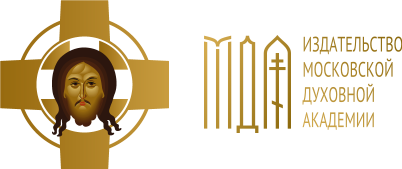Requirements for materials
Submissions should be sent to: publishing@mpda.ru
The text should be annotated (150 words) and contain information about the author: academic title and position, place of work, postal address, email.
For scientific publications of the MDA the following guidelines should be followed
GOST 7.1-2003, which in adaptation to the church editions is presented in the book:
The editorial and publishing design of church publications: a guide to the author and publisher. Moscow: Publishing house of the Moscow Patriarchate of the Russian Orthodox Church, 2015. 208 с. ISBN 978-5-88017-494-2 (Available on the website of the Publishing Council)
The main principles of the application of GOST to MDA publications are given below:
The author's name is given in italics.
In the final bibliography the following elements of the description according to GOST are not given: repeated information about the author after the slash (/), ISBN at the end of the bibliography, separating dashes in the final bibliography, information about the number of pages of the monograph or collection, the first space before the signs: and ;
In the footnote the abbreviated bibliographic descriptions (Author. Title. Place. Year) are used. This is in line with the requirements of GOST.
The title of the article, information about the author, abstract and key words are necessarily translated into English.
The Russian bibliography is transliterated into English in articles only for the Theological Bulletin.
SUBMISSION REQUIREMENTS
Type of article
Theoretical, practical, methodological scientific articles as well as reviews are accepted for publication. An article should have an explicit scientific problem that is being researched. Papers and other presentations that do not have the appearance of a scientific article with a scientific apparatus are not accepted for publication.
Manuscripts should meet the high level of general academic requirements (argumentation, structure, originality, logic, coherence), and should be written in clear, lively literary language accessible to the layman. Scientific and clerical clichés should not be abused. The use of clear, literary language does not detract from the scientific quality of an article; on the contrary, it enhances its author's credibility.
We use the letter Y.
Formatting
The overall structure of the file should be in the following order: 1. Title of the article (in Russian), 2. Author's name, 3. Information about the author (in Russian), 4. Abstract, 5. Key words (in Russian), 6. Text of the article, 7. Bibliography, 8. Title of article, 9. Author's name, 10. Information about the author, 11. Abstract, 12. Key words, 13. Bibliography.
File format - doc. Page orientation - portrait. The font is Times New Roman. Font size - 12 point. Line spacing - 1. Margins - 2 cm on all sides. The minimum length is 15,000 characters with spaces. The maximum word count is 40,000 characters including spaces. The minimum/maximum length of an article on A4 paper does not matter, you should be guided only by the number of words in the article. The text should not include any macros.
Ancient language materials should use Unicode fonts. In special cases other fonts may be used, which should be sent to the editorial office together with the materials.
Font size and line spacing should be uniform throughout the text.
Paragraphs ("red line") should be set automatically (by the upper triangle of the ruler or in the Paragraph menu) and not by using the "space" key.
Double or triple spaces are not allowed.
Information about the authors
A maximum of 5 co-authors is allowed.
Information about the author(s) should be given after the title of the article.
1) Full name of the author (in Russian and English). Academic degree and title. In English the first name is given first, then the middle name and last name - Ivan Ivanovich Ivanov.
2) Occupation and position (in Russian and English) - as presented in official documents / on the web pages of universities and research institutions.
3) Postal address - in Russian: Index, City, Street, House; in English: House, Street, City, Index, Country.
4) E-mail of the author.
If there are 2 or more co-authors: the organization and its address should be given for each co-author separately. If all co-authors are from the same organisation, the name and address of the organisation should be given after the first name, middle name and surname of the last co-author.
No other information about the authors should be given. The mobile phone number of the author should be given in the letter to the editors.
Annotation
The title in Russian is "Abstract", in English "Abstract".
The length of the abstract should be 150-300 words.
The abstract should not be italicised, underlined, etc. The text should not be divided into paragraphs.
Quotations and references to other works are not allowed in the abstract. Abbreviations should be deciphered.
The abstract should contain:
- A description of the main purpose of the study;
- A brief description of the methodology;
- Summarise the most important findings of the study and their significance
Keywords: 8-12 keywords, which may consist of single words or phrases. Keywords will help other researchers to find the article when searching for it.
Article content
When writing the text, it is recommended to divide it into sub-chapters, or assume the following internal structure of the text:
Introduction.
Methodology;
Results;
Discussion.
Conclusion (be sure to suggest possible perspectives for further research on the topic, i.e., what the author has failed to do and consequently directions for future research development);
Acknowledgements (here it is necessary to specify that the article is prepared within the framework of a grant, to thank the colleagues who are not authors of the article, but with their assistance the research was conducted, etc.)
Bibliography (See below).
Citations in foreign languages should be accompanied by a translation into Russian.
When abbreviations are used for the first time, please provide their definitions.
Tables
Text may contain tables, captions and footnotes, which must be aligned to the text width above the table.
Tables must follow the general rules for typesetting in the document (12 point, Times New Roman, line spacing, etc.).
Note. Avoid abbreviating table names (i.e. Tab. 1) in the caption or in the text. Do not write "in table above/below" or "in figure on page 2" because the position and page number of the table or figure may change during typesetting.
Illustrations
Should be embedded in the text of the article, numbered and described. Along with the article file you should send a zip-archive (or link to a cloud) with numbered files of illustrations whose numbers correspond to the numbers of illustrations in the article file. This is very helpful to the planner.
The description of the illustration should not be part of the illustration. If the description is in the illustration itself, it should be overwritten by the text.
Graphic illustrations should be of good quality. If there are captions, the text should appear clearly.
The resolution of the pictures is 300 dpi.
Number of figures and tables is unlimited
Anti-plagiarism
A general requirement is that plagiarism should not exceed 20%. Quotations and self-citation of own works published earlier are also considered to be borrowing. In certain cases the volume of borrowings may be exceeded. The editorial board should be notified separately about the increased volume of borrowings and citations.





